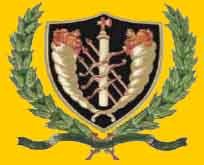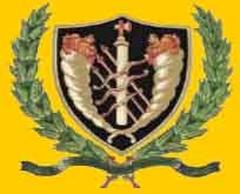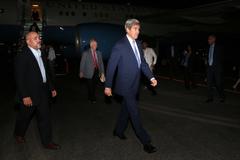
University of Cartagena Visiting Guide: Hours, Tickets, and Nearby Attractions
Date: 14/06/2025
Introduction: History and Significance
Nestled in the heart of Cartagena de Indias, Colombia, the University of Cartagena (Universidad de Cartagena) is a living testament to the nation’s pursuit of enlightenment and education. Founded in 1826 by General Francisco de Paula Santander and formally established in 1827 by Simón Bolívar, it is one of the oldest and most prestigious public institutions in Colombia. Its main campus, the Claustro de San Agustín—a 16th-century colonial monastery—offers a unique opportunity to experience a site of both academic excellence and rich cultural heritage.
The university has played a pivotal role in Colombia’s intellectual, political, and social development. Notable alumni include Nobel laureate Gabriel García Márquez. Today, it stands as a vital part of the Caribbean region’s educational landscape, offering diverse academic programs and serving as a vibrant cultural hub.
For travelers, the University of Cartagena is more than an academic institution; it is a must-see landmark that embodies the resilient spirit of Cartagena, often referred to as “La Heroica” for its role in Colombian history. Its strategic location near the famed Walled City and other historical sites makes it an essential stop for anyone exploring Cartagena’s cultural tapestry.
For more details, visit the University of Cartagena Official Website and consult Cartagena Tourism Information.
Table of Contents
- Introduction
- Historical Overview
- Academic Evolution and Outreach
- Practical Visitor Information
- Cultural and Historical Importance
- FAQs
- Visitor Recommendations
- References
Historical Overview
Founding and Early Years (1826–1850s)
Established by decree in 1826 and formally inaugurated in 1827, the University of Cartagena originally operated under the name University of Magdalena and the Isthmus. Its earliest faculties focused on Law and Medicine to foster civic leadership in the fledgling republic. The Claustro de San Agustín, the university’s main campus, is a striking example of Spanish colonial architecture, featuring arched cloisters and tranquil courtyards (University of Cartagena Official Website).
Institutional Development (19th–20th Centuries)
The university adapted to Colombia’s evolving needs, expanding its faculties and modernizing its infrastructure. Notable milestones include the inauguration of the Health Campus in 1989 and the relocation of Science, Engineering, and Economics faculties to the Piedra Bolívar campus in the early 2000s.
Academic Innovation and Regional Impact
In 1993, the university broadened access to education in the Caribbean region by launching Regional Centers for Distance Education (CREAD). Today, it offers a comprehensive array of undergraduate and postgraduate programs, maintaining strong ties with national and international academic networks.
Practical Visitor Information
Visiting Hours and Entry
-
Main Campus (Claustro de San Agustín):
- Monday–Friday: 8:00 AM – 6:00 PM
- Saturday: 9:00 AM – 1:00 PM
- Entry: Free for general public; guided tours may require advance booking and a nominal fee.
-
Address: Calle de la Universidad #6-60, Cartagena Historic Center
Entry may be restricted during exam periods or special events. Check in at the main gate and inform security of your visit. Always verify current hours on the official website.
Guided Tours and Campus Highlights
Guided tours are available and offer insights into the campus’s colonial architecture, the university’s role in Colombian history, and its most notable alumni. Highlights include:
- Claustro de San Agustín: A showcase of colonial stone arches and courtyards.
- Gabriel García Márquez tributes: Plaques and exhibitions dedicated to the Nobel laureate (University of Cartagena: García Márquez).
- Historic library and chapel: Often included in tours, featuring rare manuscripts and art.
Tours can be arranged via the official visitor center or local tourism agencies.
Accessibility and Amenities
- Accessibility: Wheelchair access is available at key points, although some areas have stairs and uneven surfaces. Contact the university in advance for assistance.
- Facilities: Restrooms, a university café, and a bookstore are available on site. Free Wi-Fi is accessible in some public areas.
- Nearby dining: The surrounding Walled City offers numerous cafés and restaurants.
Nearby Attractions and Photographic Spots
The university’s central location allows for easy exploration of other Cartagena historical sites, including:
- Plaza de Bolívar: A lively square nearby.
- Palace of the Inquisition: A museum of colonial history.
- Gold Museum (Museo del Oro Zenú): Featuring pre-Columbian artifacts.
- Castillo San Felipe de Barajas: A remarkable fortress just outside the Walled City.
- Getsemaní neighborhood: Known for vibrant street art and nightlife.
The Claustro de San Agustín’s courtyards and facades are ideal for photography, especially during the morning or golden hour.
Cultural and Historical Importance
The University of Cartagena is a bridge between the city’s colonial past and its modern aspirations. It has played a central role in shaping Colombia’s intellectual and political discourse and continues to be a center for cultural and academic excellence. The campus regularly hosts art exhibitions, literary events, and public lectures (Agendacolombia: Top Tourist Attractions in Cartagena).
Frequently Asked Questions (FAQ)
What are the University of Cartagena’s visiting hours?
Monday to Friday: 8:00 AM to 6:00 PM; Saturday: 9:00 AM to 1:00 PM.
Is there an entrance fee?
No; entry is free for public spaces. Guided tours may charge a small fee.
Are guided tours available?
Yes, through the institution or local agencies; self-guided tours via apps are also popular.
Is the campus accessible for people with disabilities?
Key areas are accessible, but some historic features may limit full access. Contact the university in advance for support.
Can I take photographs?
Yes, in outdoor and public areas. Always ask permission before photographing people or entering classrooms.
Visitor Recommendations
- Plan ahead: Check visiting hours and tour availability before arrival.
- Combine visits: The university is walkable from other major historical sites.
- Dress for the weather: Cartagena is hot and humid; light clothing, water, and sun protection are essential.
- Stay safe: The area is generally safe, but maintain standard precautions with valuables (The Unknown Enthusiast: Cartagena Travel Tips).
- Language: Most information is in Spanish; basic phrases or translation apps are helpful.
- Peak times: Mornings and academic breaks are best for fewer crowds.
Summary
The University of Cartagena is a cornerstone of Colombian heritage, offering visitors a window into the nation’s academic, architectural, and cultural evolution. Its free public access, guided tours, and central location make it an inviting destination for history enthusiasts, students, and travelers. Combine your visit with other nearby attractions for a comprehensive experience of Cartagena’s historic charm.
Stay updated on events and visitor policies via the University of Cartagena Official Website. Enhance your visit with the Audiala app for curated tours and local insights.
References
- University of Cartagena Official Website
- Cartagena Tourism Information
- Agendacolombia: Top Tourist Attractions in Cartagena
- Best Time to Visit Cartagena
- Jetset Christina: Cartagena Travel Guide
- The Unknown Enthusiast: Cartagena Travel Tips

